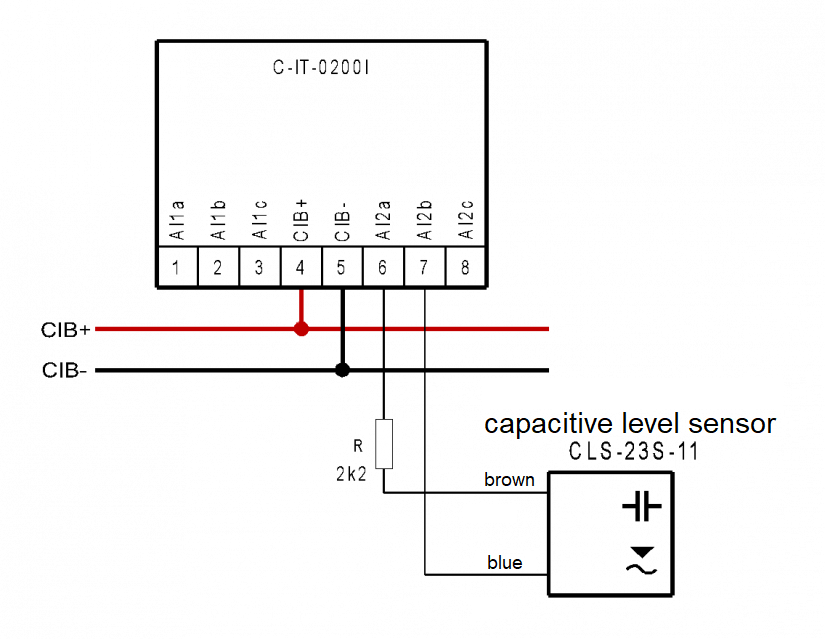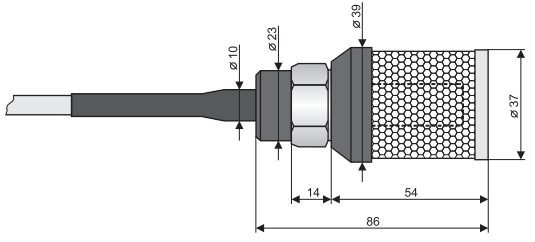E.g. the minimum water level in the well can be monitored by a capacitive level sensor CLS-23S-11, which is a submersible (the IP-68 protection) level sensor for monitoring water levels in bores, wells, and reservoirs. It is a suspension sensor on a cord, with stainless steel protective basket preventing a mechanical damage of the electrode. A maximum immersion depth is 100 m.

Fig. 1. Wiring of capacitive level sensor CLS-23S-11
Notes:
-
The sensor is connected to the input of the C-IT-0200I module configured for measuring the current loop 4÷20 mA via a 2k2 serial resistor.
-
The value of the resistor can be in the range from 1k8 to 3k3, and in relation to this value, the decision-making level of the measured analogue value (treated by the application programme) is also changed; any resistor can be used, even a miniature PTO type. It can be placed directly into the C-IT-0200I module in the terminal space.
-
It is recommended to connect the sensor cable (optional length up to 15 m) directly in the C-IT-0200I module. If the cable needs to be extended, it is recommended to use a shielded cable (e.g. J-Y(St)Y 1x2x0.8); the shielding should be connected as convenient - to the protective earth at the site of the module, etc.

Fig. 2. Dimensions of the CLS-23S-11 sensor
Point level sensing in a tank can also be done by conductive probes (e.g. the CNP-18) connected to analogue inputs intended measuring condensation, e.g. the C-HM-0308M. Monitoring the minimum and maximum levels requires three probes with sufficient lengths of stems to allow evaluating both the upper and the lower limits. The resistance is always measured between two probes (in tanks made of conductive material, one probe can be substituted with the tank itself).
 English
English